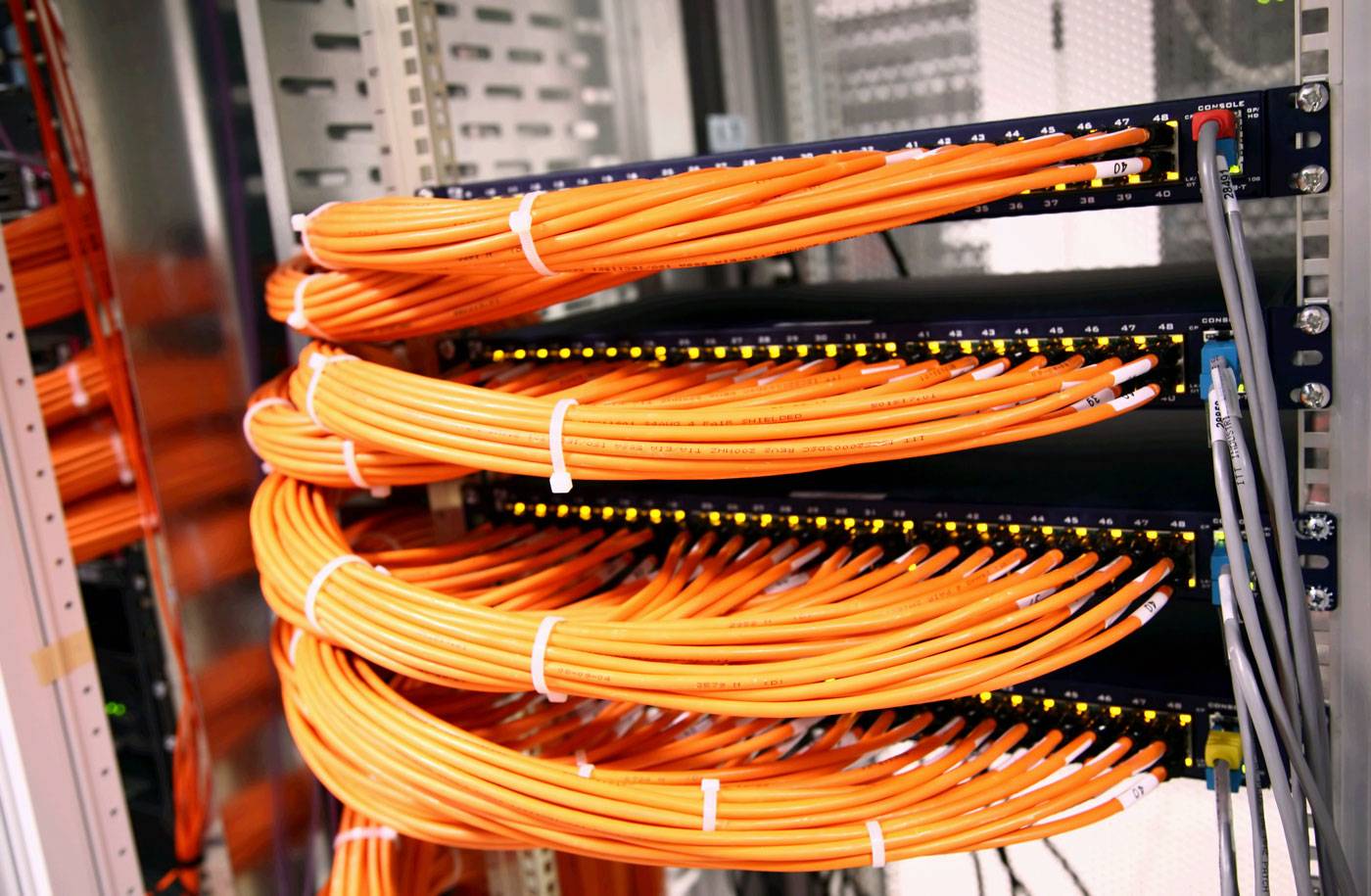Case study: Updated IT Infrastructure Makes Technology & Business Innovation Possible
Nothing lasts forever, and for any organization to keep up with and stay ahead of the competition, the IT infrastructure needs to be regularly updated. The flashy hardware you purchased in a few years ago may swiftly become inappropriate for use due to changes in technology, how we do business, and consumer demands. Knowing when to upgrade and how to do it in a way that causes the least amount of disturbance to your operations is crucial.

Why Do You Need an IT Infrastructure Overhaul?
The fact that technological hardware doesn’t actually have a very long lifespan is the obvious explanation why you might need to overhaul your IT infrastructure. Servers and desktop and laptop computers have an average lifespan of three to five years, so it makes sense to replace or upgrade them as part of machine management before they start to wind down and become inefficient.
The manner we presently work has changed, which is added to it. Businesses are increasingly adopting policies that allow employees to connect to and access the company network via mobile devices, which they frequently prefer to do. They have to rearrange their IT assets in order to meet this need. It is a waste of money to have computers sitting idle in offices when IT budgets may be utilised to provide employees with personal mobile devices.
Similar to this, outdated computers and servers that can’t handle this or have performance issues when attempting to must be updated due to the requirement for team members, clients, stakeholders, and customers to have on-demand access to data from anywhere and the exponential expansion of that data.
The older your operating system, the more susceptible it is to virus or ransomware assaults, data loss, and other security issues.
The Challenge of Cost and Business Continuity
The primary arguments against updating the IT infrastructure are that it will be too expensive and that it would interfere with regular business operations and processes, causing downtime that the organization cannot afford. This may cause you to put off upgrading, but the longer you wait, the more out of date your IT will be, which may result in even higher costs in the future.
It makes financial sense to consider what you can improve on within your IT budget since simple upgrades to specific areas now could mean avoiding having to conduct a major overhaul next year.
The ability to create new processes that can help you develop and future-proof your organization makes it very profitable to upgrade the technology infrastructure. This keeps you one step ahead of the competition. Every modern organization depends on IT, therefore keeping it current is truly a crucial business investment that boosts productivity and efficiency.
There is no need for this to be the case when it comes to the worry that corporate operations will be hampered. You can implement the changes you need and ensure a smooth transition without having to deal with a lot of downtime by carefully planning and carrying out your overhaul.
Steps to Take for a Pain-Free Overhaul / The Plan
Nothing should be started without a sound plan, just like with any corporate strategy or procedure. Plan out each step of the IT infrastructure upgrade beforehand so that everyone is aware of what has to be done when, who will be in charge of each activity, and who will be impacted by the change.
There will be no unpleasant surprises and less chances of a business interruption thanks to this detailed plan for everyone involved.
Many businesses opt to outsource the IT revamp to an outside service provider, and they ought to offer you a thorough action plan that takes into account both your present and future needs.
The Audit
A review of the company’s current IT assets is required because, of course, you need to know exactly what it contains before you start improving your IT infrastructure. Do a thorough inventory of your current hardware and software, including its version, Processor, RAM size, purchase date, software loaded on it, warranty expiration date, user, and intended usage.
You can begin to implement the strategy after you are aware of what you currently have and when each asset needs to be upgraded.
Again, it can be a very good idea to outsource this procedure to a third-party IT assistance group. They can carry out the audit on your behalf to evaluate your IT infrastructure and offer priority recommendations, but they can also establish your IT plan and synchronize it with the broader business strategy, lowering the total cost of ownership and achieving your business goals.
Make A Decision
You may begin to decide how much of the IT infrastructure needs to be upgraded once you have a clear understanding of what needs to be upgraded as a matter of priority and what is within the IT budget.
SMEs and businesses with limited IT budgets may opt to temporarily upgrade specific components, such as adding more memory, extending warranties, and adding more processors, hard disks, and networking hardware, as opposed to replacing individual machines or devices that are obviously ready for the scrap heap.
This allows the company to stretch out the cost of upgrades over time and can extend the life of the IT infrastructure by a few years, but it also means that the company might find itself in a cycle of continuous upgrades.
If you have the money, it would be wiser to replace all of your gear and invest in the equipment that will best serve your company’s needs both now and in the future. Although the initial outlay will be more, it is only an investment and, barring a technological catastrophe, should last for half a decade.
In addition, financing can be used to stretch costs throughout the life of your IT assets. If you outsource the process, the service provider should be able to save money through lease and volume licensing.
Consider going to the cloud as an additional alternative to connect and host your hardware, server, and storage online. The benefit of this model is that it allows all users to access your network from anywhere, at any time, from any device, fulfilling the needs of the modern business. This model saves money by replacing your traditional server with an online one and leaving the maintenance to the provider.
Enlighten The Staff
All users inside the organization need to be aware of the process and be aware of exactly what is changing and when. An IT infrastructure revamp shouldn’t be kept a secret or a surprise. Keep them informed of the improvements and put in place a contingency or business continuity plan in case something goes wrong. Unexpected downtime will affect their capacity to do their tasks and may result in financial loss for the company.
If any process changes result from the upgrades, you should also provide training for all staff members. This training should continue after the event if necessary to get everyone acclimated to the new system, machinery, or devices.
Add in new technologies and working practices (such as mobile working, which will account for almost three-quarters of the US workforce by 2020) and a flexible, scalable approach is a must.
So it’s crucial to ask if there are limits on the number of MFPs a solution can handle, and how it will manage multi-site or multi-national infrastructures.
Execute at the Right Time
It is required to temporarily suspend business operations in order to perform the overhaul or updates, but this should be done when it is unlikely that anyone will be using them. Replace the broken equipment during business hours or on the weekend so that when staff members return to work, they can use their new machines or devices right away and everything will continue as normal.
Constant Assessment
Technology is continuously changing, therefore your company will need to continually evaluate whether your IT infrastructure satisfies your requirements as you expand and develop in order to stay ahead of the curve. With the data acquired throughout the planning and audit phases, you should determine not only how long your IT assets should endure but also what alternative technology you may employ to innovate and increase efficiency.
An outside IT service provider, who has their finger on the pulse of the newest IT advances, can offer advice on the best IT infrastructure approach for your company. Your IT staff should be able to provide advice on this as well.
From the initial assessment to the procurement and implementation of upgrades matched with your IT plan, the team at Network Doctor can offer your company the IT support and knowledge it need to carry out an infrastructure overhaul smoothly.
Get in touch with us to learn more and to get going by scheduling an audit.

